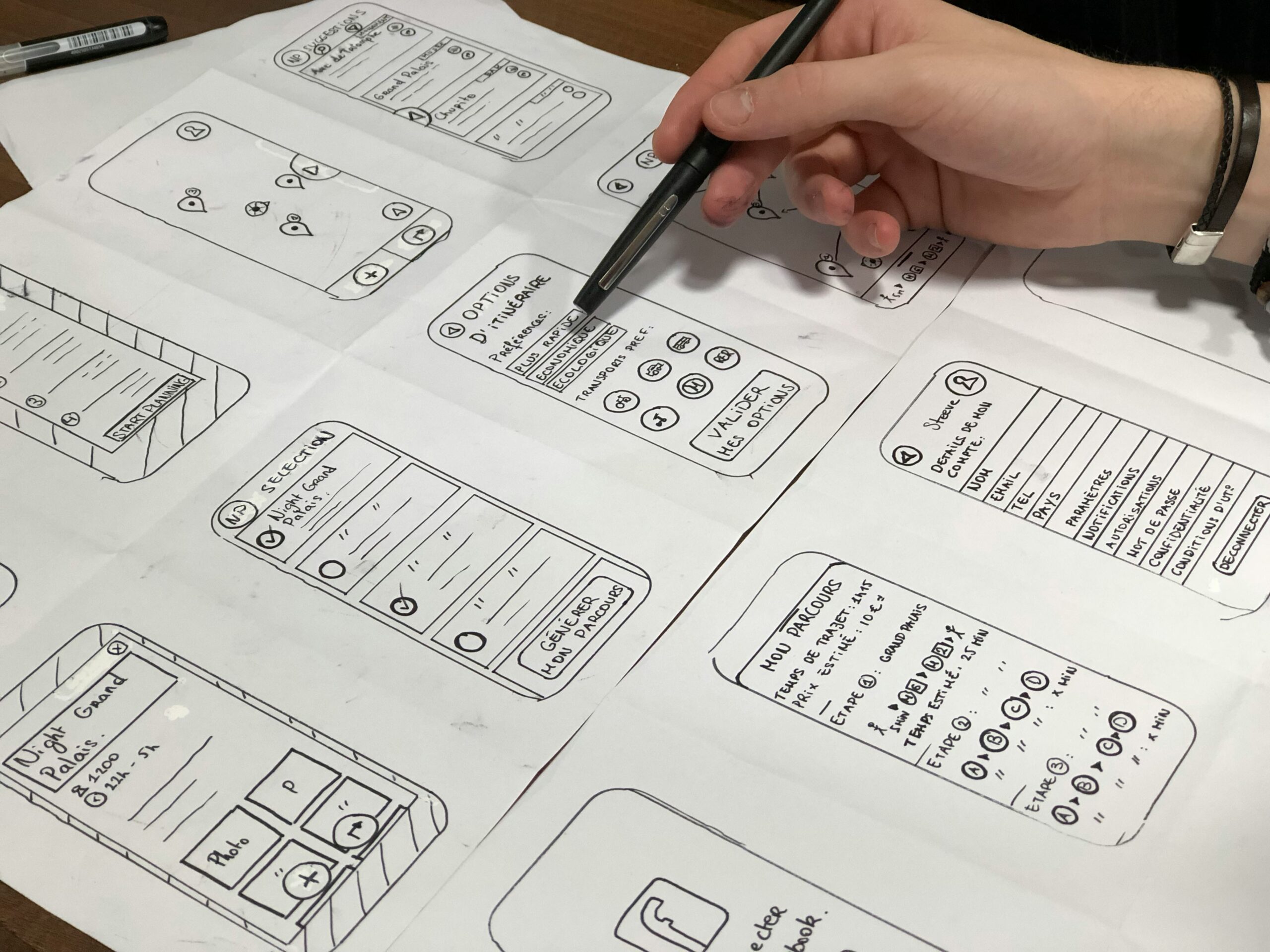User experience (UX) and user interface (UI) design stand at the cusp of innovatin. As we move ahead into 2025, the digital world is undergoing changes that promise to make our interactions more intuitive, intelligent, and human-centric.
From Static to Dynamic Experiences
Gone are the days when digital interfaces were merely functional tools. Today, they are becoming living, breathing ecosystems that adapt, learn, and respond to individual user needs with unprecedented sophistication. This transformation is driven by converging technologies that blur the lines between human perception and digital interaction.
1. Your Digital Companion
Imagine an interface that understands you better than you understand yourself. Artificial intelligence is making this a reality through hyper-personalized experiences. Machine learning algorithms now analyze your behaviors, preferences, and contextual environments in real-time, dynamically reshaping interfaces to match your exact requirements.
For instance, a productivity app might automatically adjust its layout and feature prominence based on your work patterns. If you’re a morning person who tackles complex tasks early, the interface will prioritize those functions during your peak hours. Conversely, it might simplify the view during late-evening hours when your cognitive load is higher.
2. Design for Everyone, Not Just Most
Accessibility has transcended compliance checklists and become a fundamental design philosophy. In 2025, designers are embracing comprehensive inclusivity that considers diverse human experiences. This means interfaces that adapt for users with different abilities, technological access levels, and cultural backgrounds.
Technologies like advanced screen readers, contextual language translations, and adaptive input methods are becoming standard. A visually impaired user can now experience rich digital content through sophisticated audio descriptions and haptic feedback mechanisms.
Bridging Physical and Digital Realities
3. Seamless Digital-Physical Integration
Augmented and mixed reality interfaces are revolutionizing how we perceive digital information. No longer confined to screens, digital experiences now overlay and interact with our physical environment. Imagine walking through a city and receiving contextual information about historical landmarks, restaurant recommendations, or navigation cues—all seamlessly integrated into your field of vision.
Architects, engineers, and designers are using these technologies to create immersive collaborative spaces where physical and digital elements coexist harmoniously.
4. Emotional Intelligence in Design
Perhaps the most profound trend is the emergence of emotionally intelligent interfaces. Advanced sentiment analysis allows digital experiences to recognize and respond to user emotional states. A customer support chatbot might detect frustration and automatically adjust its communication tone, or a learning platform could recognize cognitive fatigue and suggest a break.
This emotional awareness transforms digital interactions from transactional exchanges to empathetic experiences that genuinely understand human complexity.
Technological Sophistication Meets User Comfort
5. Microinteractions
In 2025, designers are treating microinteractions as an art form. Every subtle animation, transition, and feedback mechanism is meticulously crafted to create moments of delight. A button’s gentle pulse, a smooth page transition, or a nuanced loading animation are no longer just functional elements but carefully designed emotional touchpoints.
These microinteractions reduce cognitive friction and make digital experiences feel more natural and enjoyable.
6. Sustainable and Ethical Design
As digital experiences become more pervasive, designers are embracing sustainability and ethical considerations. This means creating interfaces that minimize digital carbon footprint, promote responsible technology usage, and prioritize user privacy.
Interfaces now provide transparent data usage insights, offer granular privacy controls, and even guide users towards more mindful digital consumption.
The Evolution of Interface Interactions
7. Beyond Touch
Voice, gesture, and proximity-based interactions are becoming mainstream. Users can now navigate complex interfaces through natural language, subtle hand movements, or even eye tracking. These technologies are particularly transformative for accessibility, allowing users with different physical abilities to interact with digital systems more intuitively.
8. Predictive and Proactive Experiences
Interfaces are transitioning from reactive to predictive models. Machine learning algorithms anticipate user needs before explicit actions are taken. A project management tool might suggest task prioritizations, a health app could recommend lifestyle adjustments, and a navigation system could predict your destination based on contextual cues.
The Technical Frontier
9. Quantum Computing Visualization
As quantum computing emerges from research laboratories, designers are developing novel visualization techniques to represent complex computational processes. These interfaces aim to make abstract technological concepts more comprehensible, bridging the gap between advanced technology and user understanding.
10. Advanced Authentication Experiences
Security interfaces are becoming sophisticated yet frictionless. Biometric authentication now extends beyond fingerprints and facial recognition to include behavioral biometrics. Your typing rhythm, mouse movement patterns, and even walking gait can serve as unique identification markers.
Unified and Continuous Experiences
11. Cross-Device Continuity
Digital experiences now transcend individual device limitations. Your interaction context, preferences, and progress seamlessly transfer across smartphones, wearables, smart home devices, and emerging technological platforms.
12. Cognitive Load Optimization
Recognizing human cognitive limitations, designers are implementing intelligent information hierarchies. Interfaces dynamically adapt their complexity, revealing information progressively and reducing overwhelming cognitive demands.
Looking Ahead: A Human-Centric Digital Future
The UI/UX design trends of 2025 represent more than technological advancements—they signify a philosophical shift. Digital experiences are becoming extensions of human cognition, adapting, learning, and growing with us.
As we stand at this exciting intersection of technology and human experience, one thing becomes clear: the future of design is not about creating interfaces that humans must adapt to, but interfaces that adapt to humans.




